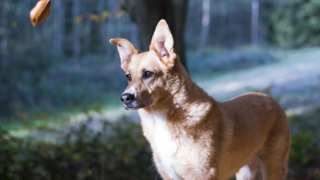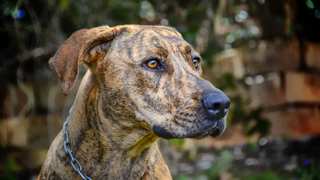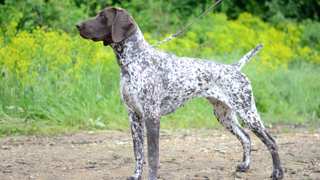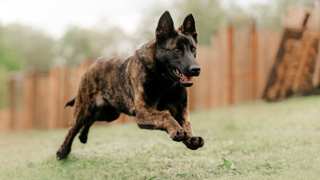Vizsla diet and nutrition, as much as (or even more than) any breed, is incredibly important in keeping these dogs in good physical shape. With their lean, muscular bodies and active lifestyles, Vizslas require food packed with animal proteins, carbohydrates, and healthy fats. This means that only premium food should be given to these robust animals, as high-quality foods have the necessary proteins and carbs that cheap dog foods simply lack. In fact, breed club officials attest to the ability to quickly spot a Vizsla that subsists only on inexpensive food: the dog has an unhealthy-looking coat, poorly defined muscles, and clearly visible ribs. So it's critical that Vizsla dog food is of high quality, for the animal's health as well as its vitality.
But what type of food to feed your Vizsla? How much of it? And how often? Premium dry food seems to be the most popular choice among owners. Adult Vizslas, depending on their age and overall activity level, need 3-4 cups of food per day, divided into two meals. And how much to feed a Vizsla puppy? Depending on its age in months, a growing puppy will need somewhat less: 2-2½ cups per day, divided into three meals until the pup is nine months old. Use the feeding chart below for further reference:
Dog AgeDog WeightFood TypeAmountFrequency2 Months12 lbsDry0.3 cups3x/day3 Months20 lbsDry0.4 cups3x/day6 Months35 lbsDry0.6 cups3x/day9 Months45 lbsDry1 cup2x/day12 Months50 lbsDry1.25 cups2x/day18 Months+55 lbsDry1.5 cups2x/dayIt's important to try and stick the above-listed portions, because while obesity isn't highly prevalent in these dogs, it can make their quality of life very dismal. A fat Vizsla will have joint and bone problems, making its movement more difficult and even painful; overweight dogs also have breathing and digestive issues, not to mention a shortened lifespan. So no over-feeding, don't feed the Vizsla scraps from the table, and by all means, do not "free-feed" these dogs. Free-feeding is leaving food in the dog's bowl all the time, allowing it to eat anytime it wants; veterinarians say it's the major cause of canine obesity, and is a terribly unhealthy practice. Put your Vizsla's bowl down only at mealtimes, then pick it up 20 minutes or so after the dog begins eating, even if food remains.
If you fear your Vizsla is overweight, give the dog this simple Ribs Test: run a hand along its side, and if you can't feel any ribs, it's diet time. Reduce the dog's daily food consumption by one-fourth, and add an extra walk/jog or play period to its daily exercise schedule.




